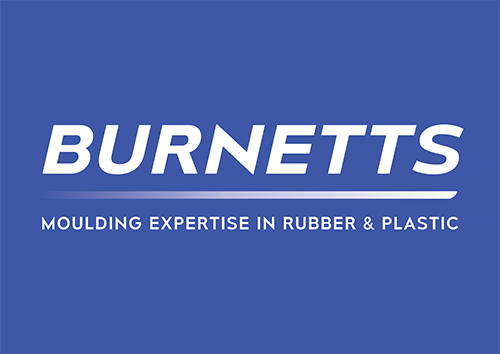Rubber Moulding
Rubber Moulding Manufacturer
Moulding parts in rubber materials requires specialist equipment and knowledge. We have a team of dedicated engineers and chemists that can ensure your problems are solved economically and effectively.
Do you need help and advice choosing the correct type of rubber for your application? We have the right rubber solutions to suit your application, including EPDM, HNBR, FKM, Nitrile and Silicone.
Identifying the correct material at the start of a project is where we come in as experts so you can avoid unnecessary expense and identify the benefits of each material in your application.
Ethylene-Propylene Diene Monomer (EPDM)
✅ Brake Systems, Food Processing, Plumbing Applications and Cooling Systems
Ethylene-propylene compounds are typically developed with sulphur or peroxide cure systems. They are suitable over a wide range of temperature exposure and have good resistance to compression over time. EPDM has a superb resistance to UV, Ozone and weathering.
These compounds are used to seal in hot water and steam environments, with good resistance to mild acids, detergents, alkalis, silicone oils, greases, ketones and alcohols. They are commonly used for brake systems, external weather exposure applications and cooling systems. Accreditation versus drinking water (WRAS) offers the option to utilise the material in plumbing applications and for food use (FDA, NSF).
Neoprene (Polychloroprene Rubber)
✅ Battery Components, Firefighting Equipment, Marine Environments, Oil & Gas and Electrical Systems
Neoprene was one of the first synthetic rubbers to be developed as a more oil resistant substitute to natural rubber. Its unique properties make it one of the most versatile compounds. It has superior chemical, oil and heat resistance when compared to other rubbers and is second only to natural rubber for fatigue resistance. One benefit of Neoprene materials is that they are generally self-extinguishing versus flame. Neoprene is widely used across engineering industries especially where oil resistance is required.
Nitrile Rubber (Acrylonitrile Butadiene)
✅ O-Ring Seals, Automotive and Aeronautical Fuel, Oil Hoses, Seals and Gaskets
Nitrile is the most utilised elastomer in the seal industry. By varying the proportions of its material properties, its capabilities for being heat, oil and fuel resistant can be changed. Nitrile has an excellent compression set, does not tear easily and is resistant to abrasion.
Hydrogenated Nitrile Rubber (HNBR)
✅ O-Ring & Piston Seals, EV Battery Seals
HNBR is a saturated polymer chain material which therefore provides superior ozone resistance to Nitrile. HNBR offers a superior oil and heat resistance to Nitrile without the expense of FKM material. General use, due to its high wear resistance, is in pipelay systems, piston seals, where resistance to oil is required and in EV battery containment seals.
Viton® (Fluroelastomer, FKM)
✅ Hydraulic Brake System Seals, Diaphragms and Automotive Fuel Seals
FKM materials are specialist high temperature resistance materials for use versus a wide range of aggressive chemicals, fuels and oils. The materials are not suited to low temperature resistance although there are specialist grades that offer some benefit versus standard compounds.
Silicone (VMQ)
✅ Hydraulic Brake System Diaphragms, Oven Seals and Food Use
Synthetic material capable of operating from -60ºC to 225ºC and above with special grades. Silicone is easy to colour and offers good resistance to oils and weathering. It is not as strong as other traditional rubber materials but offers performance stability over a wide temperature range. Extremely flexible with high elongation performance, resilience, and a full hardness range. More details on our dedicated silicone moulding page.
Natural Rubber (Polyisoprene)
✅ Vibration Isolators and Footwear
Natural rubber is one of the most commonly used engineering rubbers because of the large variety of compounds available. Generally, a lower cost product, natural rubber has a long life, low compression set, is abrasion and tear resistant and has excellent bonding capabilities. It is primarily used for vibration isolators, pipelay components and diaphragms where high wear or tear resistance is required.
A push towards more sustainably sourced material is gaining natural rubber a return versus the oil derived materials that have been in use for footwear.

